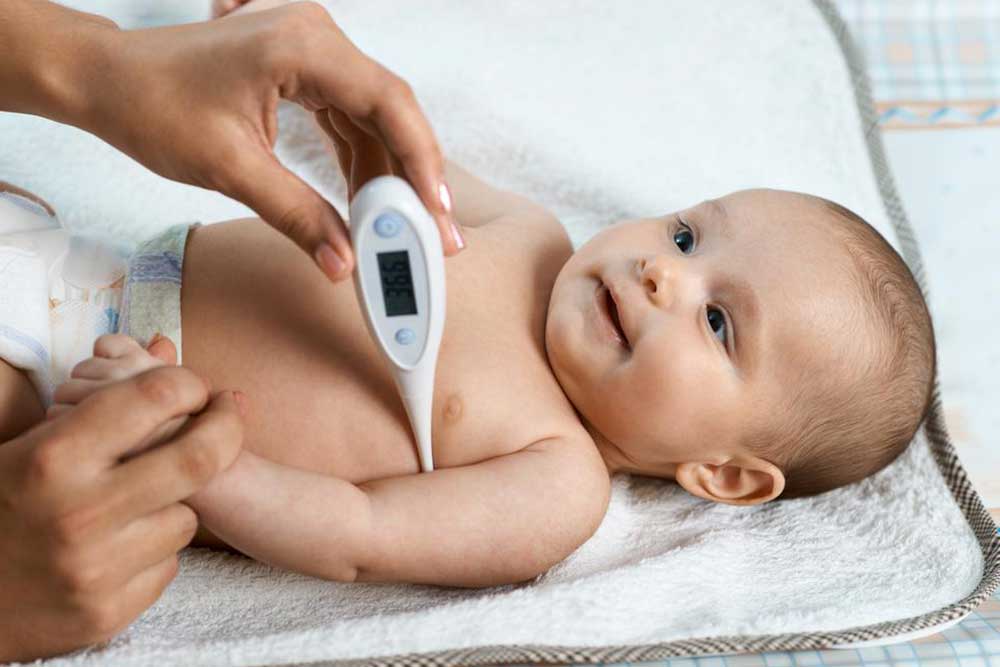Comprehensive Guide to Temperature Charts and Their Role in Fever Monitoring
This comprehensive article delves into the significance of temperature charts in fever detection. It explains various methods of measuring body temperature, the importance of tracking temperature patterns, and how these charts assist in diagnosing and managing illnesses. Whether for personal health monitoring or clinical use, understanding temperature fluctuations and classifications is key to timely medical intervention. The article highlights key facts about normal and abnormal body temperatures, providing valuable insights for caregivers and healthcare providers to ensure effective health assessments and treatment plans.

The Importance of Temperature Monitoring and How Temperature Charts Assist in Detecting Fever
Monitoring body temperature is a fundamental aspect of evaluating health and diagnosing various medical conditions. Accurate temperature measurement helps healthcare providers determine if an individual has a fever, which often indicates infection or other underlying illnesses. There are several methods to measure body temperature, each with its advantages and limitations, including oral, axillary (underarm), rectal, and tympanic (ear) measurements. While the choice of method can influence the readings slightly, understanding how each approach works is vital for accurate assessment.
Typically, a normal body temperature hovers around 37°C (98.6°F), but it can vary slightly based on the individual's age, activity level, time of day, and method of measurement. Rectal temperatures are usually about 0.3-0.6°C higher than oral readings, making them more reliable for infants and young children. Axillary temperatures tend to be slightly lower but are often used for convenience in routine checks. Ear thermometers (tympanic) provide close estimates of core temperature and are popular for their speed and ease of use.
One of the most effective tools for fever detection is the temperature chart, which maps body temperature ranges and helps identify when someone might be experiencing a febrile state. Temperature charts are especially useful for tracking ongoing illnesses, monitoring the progression or remission of fever, and guiding treatment decisions. These charts also present various categories of body temperature, such as hypothermia, normal, hyperthermia, and hyperpyrexia, enabling quick classification of the patient's condition.
An important aspect of temperature monitoring involves basal body temperature (BBT), which is typically measured upon waking each day. BBT reflects the body's lowest resting temperature, providing insights into hormonal cycles in women and overall health status. Women’s body temperatures can fluctuate throughout their menstrual cycle, especially during ovulation, which can be observed on a detailed temperature chart.
The significance of core body temperature cannot be overstated, as it is closely regulated within a narrow range (approximately 36.5°C to 37.5°C). Maintaining this balance is essential for enzymatic activities, metabolic processes, and overall bodily functions. Deviations from this range can be caused by various factors—hyperthermia (heat stroke, drug reactions, neuroleptic syndrome) occurs when body temperature rises excessively, whereas hypothermia results from an abnormal drop in body temperature below 95°F, which can be life-threatening due to risks of organ failure and impaired physiological functions.
The immune system responds to infections and certain diseases by producing fever-inducing substances called pyrogens. These pyrogens signal the hypothalamus in the brain to raise the body's temperature set point, resulting in fever. Fever is a defensive mechanism intended to inhibit pathogen growth and enhance immune function. Understanding the process of fever development through temperature charts can aid in early detection and timely medical intervention.
Key facts to remember regarding body temperature include:
Body temperature naturally fluctuates during the day, often lower in the early morning and higher in the late afternoon or evening.
Temperatures exceeding 38°C (100.4°F) typically indicate an infection or illness that may require medical attention.
The normal body temperature range is approximately 36.5°C (97.7°F) to 37.5°C (99.5°F).
Fever classification includes categories like hypothermia, normal, hyperthermia, and hyperpyrexia, each with specific temperature thresholds.
Ear thermometers (tympanic) are effective for measuring core temperature, offering results comparable to rectal measurements.
Guidelines for infants and young children also emphasize the importance of temperature measurement. According to the American Academy of Pediatrics, a typical baby’s normal temperature ranges from 97°F to 100.3°F. A temperature above 100.4°F suggests fever, which warrants monitoring and possibly medical evaluation. Fever classifications in children include:
Hypothermic: below 95°F
Normal: 97°F - 99.5°F
Hyperthermia: above 101°F
Hyperpyrexia: above 107°F
Using detailed fever charts allows healthcare providers and patients alike to recognize different types of fever, their severity, and duration. This understanding is essential for diagnosing the underlying cause of the fever and determining appropriate treatment strategies. Types of fever include:
Prolonged Fever: Extends over 10 to 14 days, often characterized by low-grade temperatures.
Acute Fever: Appears suddenly and is typically associated with infections or injuries.
Chronic Fever: Persists for more than four days, potentially indicating chronic diseases such as tuberculosis or autoimmune disorders.
Remittent Fever: Fluctuates at various intervals but does not completely normalize.
Hyperpyrexia: An extreme elevation of body temperature above 107°F, requiring immediate medical intervention to prevent fatal outcomes.
Understanding these categories and monitoring temperature progression is crucial for effective clinical management of infectious and non-infectious diseases. Certain conditions like rheumatic fever, scarlet fever, and viral hemorrhagic fevers (such as Lassa fever) are closely associated with fever episodes, emphasizing the importance of accurate temperature tracking.
In conclusion, temperature charts are indispensable tools in medical practice and personal health monitoring. They provide critical insights into disease progression, help distinguish between different types of fever, and guide clinical decisions. Regular and accurate temperature measurement, combined with a thorough understanding of temperature patterns, can significantly improve disease detection and management, ultimately leading to better health outcomes.





